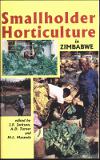| dc.contributor.author | Kadzere, I. | |
| dc.contributor.author | Jackson, JE | |
| dc.coverage.spatial | Zimbabwe. | en |
| dc.date.accessioned | 2016-03-14T12:16:05Z | |
| dc.date.available | 2016-03-14T12:16:05Z | |
| dc.date.issued | 1997 | |
| dc.identifier.citation | Kadzere, I. and Jackson, J.E. (1997) Indigenous fruit trees and fruits in Zimbabwe: some preliminary results from a survey 1993-94. In: Jackson, J.E., Turner, A.D. and Matanda, M.L. (eds.) Smallholder horticulture in Zimbabwe. Harare: UZ Publications, pp. 29-35. | en |
| dc.identifier.isbn | 0-908307-61-6 | |
| dc.identifier.uri | https://opendocs.ids.ac.uk/opendocs/handle/20.500.12413/10016 | |
| dc.description | A research survey on the trees and nutritious value of the indigenous fruits of Zimbabwe. | en |
| dc.description.abstract | Indigenous fruits have long been collected from the wild and formed part of the diet. Their importance is greatest in drought seasons because of the drought tolerance of the trees which bear them. As part of a programme on the development of drought- tolerant fruit tree crops a survey on indigenous fruits was conducted in 1993/94 with the help of the Agricultural Technical and Extension Services (AGRITEX).
Uapaca kirkiana (Shona: muzhanje) and Strychnos species (Shona: mutamba, muzhumwi, man’ono, and hakwa) were found in almost all natural regions. Ziziphus mauritiana (Shona: musau) was confined to parts of Mashonaland. Sclerocarya birrea (Shona: mupfura or shomho) was mainly found in the drier areas.
Most of the indigenous fruit trees are found in forests or grazing areas but the popularity of Ziziphus mauritiana, Azanza garkeana (Shona: mutohwe) Uapaca kirkiana, Strychnos sp., Ximenia sp., (Shona: tsvanzva or nhengeni) Ficus sp. and Vangueriopsis lanciflora (Shona: muganacha) is shown by their frequent presence around homesteads and in the main cultivated fields. Ziziphus mauritiana, Uapaca kirkiana and Berchemia (Shona: nyii) fruits are sold on local markets.
The seasons of the fruits availability is spread throughout the year e.g. Ziziphus in winter, Uapaca, some Ficus and Strychnos in the spring and early summer and Vangueria and Sclerocarya in late summer and autumn. Azanza is eaten in summer in Natural Region (NR) V and in winter and winter-spring in NR III and IV.
Despite their consumption most of the people surveyed were less interested in the indigenous fruits than in the conventional exotic fruits. The perceived disadvantages of the indigenous fruits were:
1. Difficulties in propagation
2. Lack of improved planting material: a low proportion of flesh to seed and low yields
3. A long period before the trees come into crop and slow growth rate
4. Lack of production information
5. Free availability in the forests discourages planting.
6. A poor “image” and low demand
In contrast some respondents pointed out the following advantages:
1. Ease of establishment
2. Adaptation to the harsh environment
3. Minimal management requirements
4. Some fruit trees are fast growing and high yielding with a good demand for the fruits
5. The trees are multiple-purpose and their use could help preserve the environment. This survey-derived information is being used in the development of a research
programme which includes work on selection of improved genotypes and on propagation methods. | en |
| dc.language.iso | en | en |
| dc.publisher | University of Zimbabwe (UZ) Publications | en |
| dc.rights.uri | http://creativecommons.org/licenses/by-nc-nd/3.0/ | en |
| dc.subject | Environment | en |
| dc.subject | Nutrition | en |
| dc.title | Indigenous fruit trees and fruits in Zimbabwe: some preliminary results from a survey 1993-94 | en |
| dc.type | Book chapter | en |
| dc.rights.holder | University of Zimbabwe (UZ) | en |


